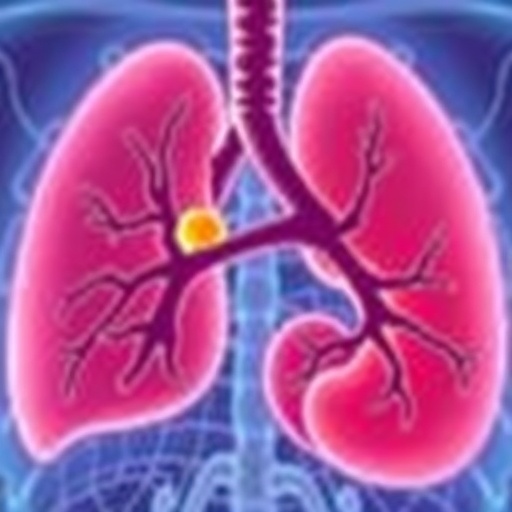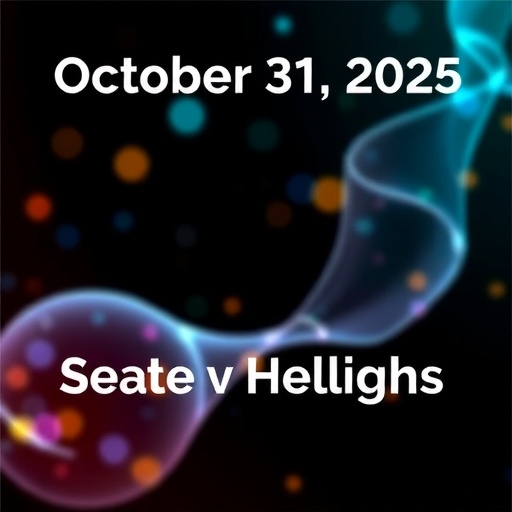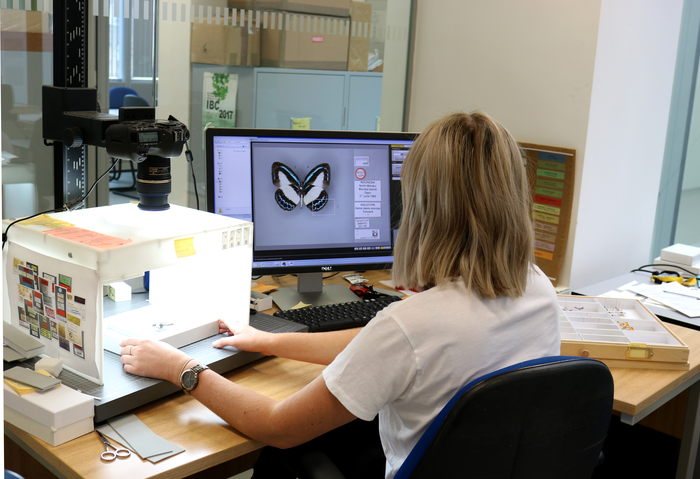A groundbreaking retrospective study conducted across two medical centers in China has unveiled promising advancements in the treatment of unresectable hepatocellular carcinoma (uHCC), a prevalent form of liver cancer characterized by its poor prognosis and limited therapeutic options. The research investigates the combined application of drug-eluting bead transarterial chemoembolization (DEB-TACE), hepatic arterial infusion chemotherapy (HAIC), and the targeted systemic therapy donafenib. This multidimensional approach has shown remarkable improvements in tumor control and patient survival, positioning it as a potential new standard in uHCC management.
Hepatocellular carcinoma (HCC) is a formidable global health challenge, particularly when surgical options are not viable due to tumor location, liver function status, or advanced disease. Conventional therapies, including systemic targeted agents and locoregional treatments, have demonstrated variable efficacy with substantial limitations. DEB-TACE, a method that delivers chemotherapy directly into the hepatic artery via drug-loaded beads, has emerged as a preferential choice to limit systemic exposure and enhance localized tumor cytotoxicity.
This study differentiated itself by coupling DEB-TACE with HAIC, a procedure that administers chemotherapeutic agents directly into the hepatic artery to maintain sustained drug concentrations at the tumor site, while incorporating donafenib, a novel oral multi-kinase inhibitor known for its anti-angiogenic and anti-proliferative effects. The integration of these therapies aims to synergistically maximize tumor suppression while minimizing systemic toxicity—a delicate balance often challenging to achieve in oncology.
Between November 2022 and December 2023, researchers retrospectively analyzed clinical data from 87 uHCC patients treated at two leading hospitals in China. Participants were stratified into two cohorts: one receiving combined DEB-TACE, HAIC, and donafenib (DEB-TACE + H + D group), and the other treated with DEB-TACE and donafenib alone (DEB-TACE + D group). This stratification allowed direct comparison of outcomes with and without the adjunct HAIC component, meticulously evaluating the added value of multi-modal intervention in advanced liver cancer.
The study’s primary efficacy endpoints included objective response rate (ORR), disease control rate (DCR), progression-free survival (PFS), and overall survival (OS). The DEB-TACE + H + D group achieved an ORR of 69.0%, significantly surpassing the 44.4% observed in the DEB-TACE + D group. This substantial increase highlights the potential of combining locoregional and systemic interventions to amplify therapeutic response, directly translating into better tumor burden reduction.
In parallel, disease control rate—a composite measure encompassing tumor response and stabilization—was significantly higher in the triple-treatment cohort, registering at 90.5% versus 73.3% in patients treated without HAIC. This suggests that adding hepatic arterial infusion chemotherapy not only augments tumor shrinkage but also prolongs periods of disease quiescence, a critical consideration for maintaining quality of life and delaying progression-related complications.
Survival analyses provided further compelling evidence supporting the combined regimen’s superiority. Median progression-free survival extended to nine months in the DEB-TACE + H + D group, compared to seven months in controls. More importantly, median overall survival was extended by six months, from 13.00 months in the DEB-TACE + D group to 19.00 months with the addition of HAIC (p=0.0031). Given the aggressive nature of uHCC and the typical survival limitations, these results signify a near 50% relative improvement and offer renewed optimism for patient prognosis.
Sophisticated statistical modeling using Cox proportional hazards regression affirmed that treatment modality independently influenced progression-free survival. Further analyses identified tumor diameter and BCLC (Barcelona Clinic Liver Cancer) staging alongside treatment method as independent predictors of overall survival. This underscores the necessity of personalized intervention strategies based on tumor characteristics and disease stage when considering combined locoregional and systemic therapies.
Safety profiles across both treatment arms were comparable, with no statistically significant differences in adverse event incidence or severity. Importantly, most toxicities observed were of mild to moderate intensity and manageable within standard clinical practice. This tolerability is paramount since treatment-related adverse effects often limit treatment adherence and impact long-term outcomes in oncology, particularly in patients with compromised liver function typical of uHCC.
Donafenib, as a backbone systemic agent in this study, distinguishes itself from earlier kinase inhibitors by its improved tolerability and potent anti-tumor mechanisms. Its integration alongside locoregional interventions leverages the complementary pharmacodynamics of shrinking tumor vasculature and enhancing chemotherapy delivery. This pharmacologic synergy likely underpins the observed improved response and survival outcomes.
The inclusion of HAIC with DEB-TACE represents an evolution in locoregional treatment paradigms. Unlike conventional TACE, which employs embolic agents and chemotherapeutics to occlude tumor-supplying vessels and induce ischemic cytotoxicity, HAIC delivers continuous high concentrations of drugs directly into the tumor microenvironment. This approach can overcome chemotherapy resistance and facilitate deeper tumor penetration, offering a mechanistic rationale for the improved efficacy reported.
Despite its retrospective design, this dual-center study provides robust clinical evidence supporting the triple therapy approach, leveraging a substantial patient cohort and rigorous outcome assessments. Nonetheless, the authors advocate for large-scale prospective randomized controlled trials to verify these findings, explore long-term efficacy, and refine patient selection criteria to maximize benefit.
The implications of these findings extend beyond immediate clinical practice. They challenge prevailing treatment algorithms for uHCC and invite a reconsideration of how multi-modal therapies can be optimized to harness additive and synergistic effects. Furthermore, the acceptable safety profile alleviates concerns regarding cumulative toxicity, often a barrier to combining multiple aggressive treatments in liver cancer.
From a mechanistic perspective, targeting tumor heterogeneity via multiple therapeutic vectors—embolization, direct chemoinfusion, and systemic kinase inhibition—addresses varied cancer cell populations and microenvironmental niches. Such comprehensive assault not only enhances initial tumor control but may also impede metastatic spread and resistance emergence, critical factors in achieving durable remissions.
In conclusion, this innovative study illuminates a promising therapeutic frontier for patients diagnosed with unresectable hepatocellular carcinoma. By marrying localized drug delivery techniques with advanced systemic therapies, it sets a new benchmark for efficacy and tolerability. As the oncology community eagerly awaits confirmatory trials, this research injects much-needed hope into the liver cancer treatment landscape.
Subject of Research: The safety and efficacy of combining drug-eluting bead transarterial chemoembolization (DEB-TACE), hepatic arterial infusion chemotherapy (HAIC), and donafenib for patients with unresectable hepatocellular carcinoma (uHCC).
Article Title: Efficacy and safety of DEB-TACE combined with HAIC and donafenib in the treatment of unresectable hepatocellular carcinoma: a dual-center retrospective study
Article References: Zhang, X., Fang, X., Wang, R. et al. Efficacy and safety of DEB-TACE combined with HAIC and donafenib in the treatment of unresectable hepatocellular carcinoma: a dual-center retrospective study. BMC Cancer 25, 1683 (2025). https://doi.org/10.1186/s12885-025-14879-2
Image Credits: Scienmag.com
DOI: https://doi.org/10.1186/s12885-025-14879-2
Tags: DEB-TACE and HAIC combination therapydonafenib for liver cancerHepatocellular carcinoma prognosisimproving tumor control in HCCliver cancer treatment advancementslocalized chemotherapy for liver tumorsmultidimensional approach to cancer treatmentnovel therapies for advanced liver cancerretrospective study on liver cancer therapiestargeted systemic therapy in liver cancertriple therapy for hepatocellular carcinomaunresectable hepatocellular carcinoma management






